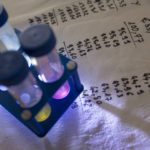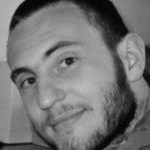Link to Pubmed [PMID] – 30061662
Link to HAL – hal-01898065
Link to DOI – 10.1038/s41598-018-29647-5
Sci Rep 2018 Jul; 8(1): 11455
Obtaining single cell data from time-lapse microscopy images is critical for quantitative biology, but bottlenecks in cell identification and segmentation must be overcome. We propose a novel, versatile method that uses machine learning classifiers to identify cell morphologies from z-stack bright-field microscopy images. We show that axial information is enough to successfully classify the pixels of an image, without the need to consider in focus morphological features. This fast, robust method can be used to identify different cell morphologies, including the features of E. coli, S. cerevisiae and epithelial cells, even in mixed cultures. Our method demonstrates the potential of acquiring and processing Z-stacks for single-layer, single-cell imaging and segmentation.

